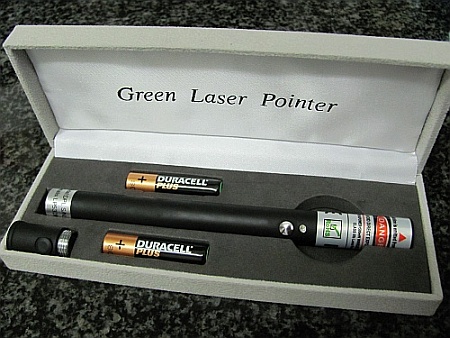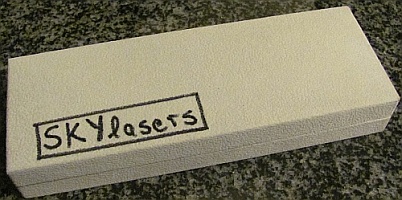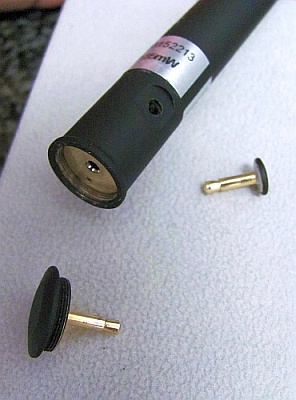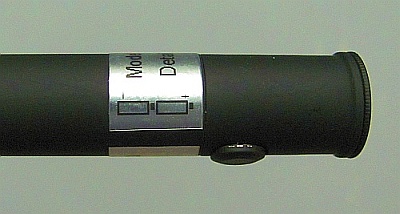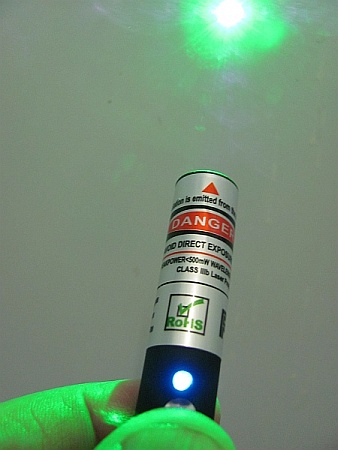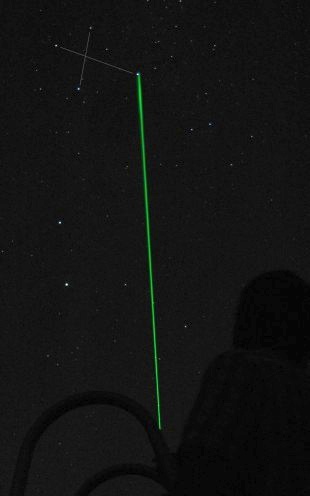Testing
a 35mW green SKYlaser from
|
| My
first impressions,
just holding the 35mW SKYlasers
green laser pointer, was that of a real solid
unit with a wonderful, almost silky/rubbery finish which makes it feel
as if it
will never slip out of your hand.
It is
quite a bit bigger than the lasers I have been using thus far
– slightly larger
in diameter and a fair bit longer (see picture).
Overall the workmanship is of good quality,
like when you install batteries and screw on the endcap, you get the
impression
of well machined screw-threads. Even
the
on/off button feels like it should last well. |
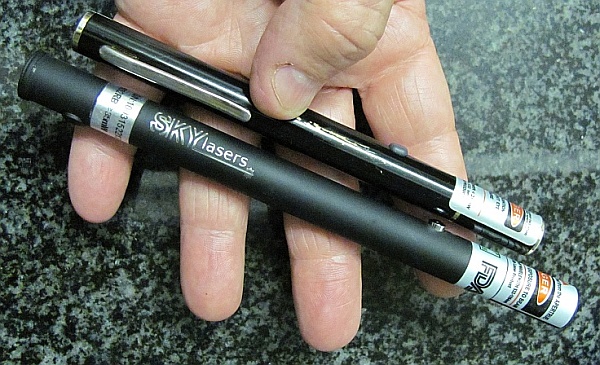 |
|
The SKYlasers unit comes in a
nice carrying
case which should protect it well for use in the field. There
are just two shortcoming with this
case. Since it is the standard size for (most)
laser pointers, because the SKYlaser is longer, the endcap needs to be
unscrewed
to fit in the case. This is not the
problem, in fact, it forces one to take out the batteries which is
always a
good thing to guard against possible battery leakage. The
problem comes when wanting to store the
laser (in two parts) together with two AAA batteries all in the
carrying
case. There is nowhere for the endcap to
go (it came in one of the battery slots). This I solved by
simply cutting out a corner in
the foam for the cap (see picture). This
works well but a similar cut-out should be standard for the supplied
cases. |
|
|
|
On the rear
end of the cap is another pin which, when removed (by unscrewing), also
disables the laser. This is the “remote
lock” for switching the laser on and off remotely.
An optional remote kit (not yet available at
the time of writing) is needed to make this work. This
feature can be quite handy for laser
pointers which are permanently (or semi-permanently) mounted on your
telescope
or as part of a delicate bench setup where the laser must not be moved
when
operating it – the same way that a cable-release on a camera
prevents camera
shake. |
|
One very simple, but extremely
handy feature
that I have not come across in any laser so far, is a simple graphic
showing
which way around the batteries go. This
may sound obvious but the batteries of lasers invariably goes in
“the wrong way
round”, compared to what we got used to in torches all our
lives. One must
therefore be aware not to put them in wrong, which is where this
graphic helps
a lot. |
|
My main use of a powerful green laser pointer is for astronomy. More specifically to point out celestial objects to people, sometimes big groups, who all need to be able to clearly see the beam, even when standing some distance away. Another extremely useful aid is to use it for pointing your telescope at a target. By mounting a laser parallel to the optical axis of your telescope, you can find a celestial object in no time, simply by pointing. The fact that the SKYlasers has a simple tubular shape really helps when mounting it. |
|
Pricewise the 35mW costs $99.99, and $79.99 for the 15mW (see www.skylasers.com). In my opinion, lasers of the 20 to 40mW range are of adequate power for pointing out celestial objects to a crowd. As
always,
great care and responsibility is required when handeling such a
dangerous
“weapon” in the proximity of people. Never
operate a laser of this power
when there is the slightest chance of pointing it near
someone’s eyes and never
let a child play with it! And,
however
great the temptation, do not, under any
circumstances point them at aircraft or passing cars! These are not toys! |
|
|

